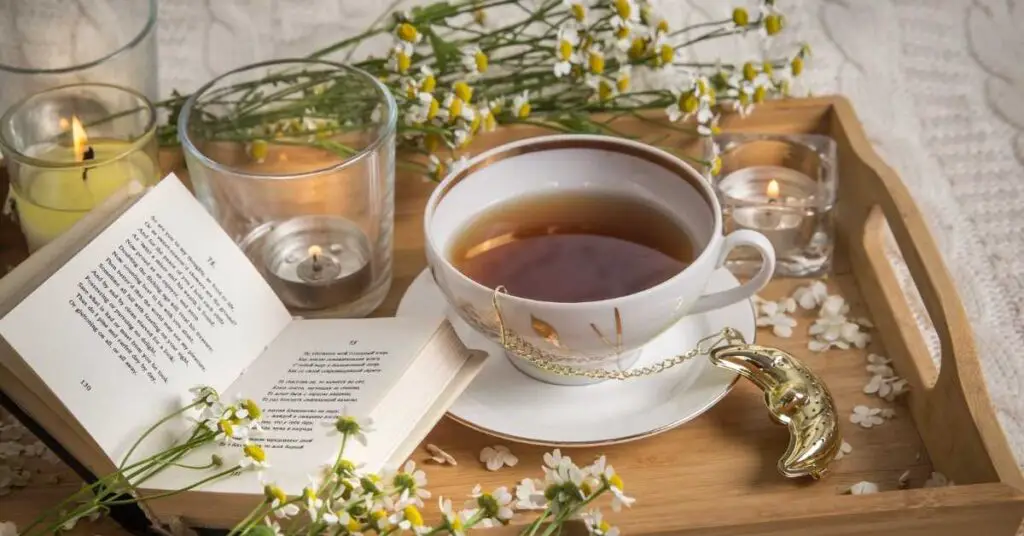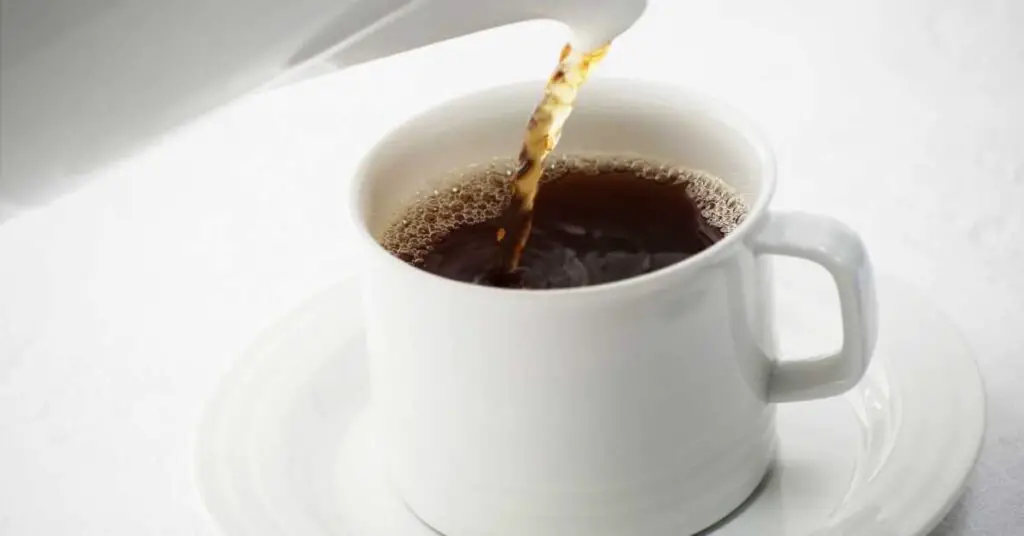Welcome to the enchanting world of Gongfu tea brewing, where every sip is a dance of flavors and every pour is a ritual.
Here, we’ll embark on a journey to demystify the art of Gongfu tea, uncovering its ancient origins and the magic that happens when tea leaves meet skillfully crafted tools.
Also read: A guide to the various tea ceremonies and traditions of Southeast Asia.
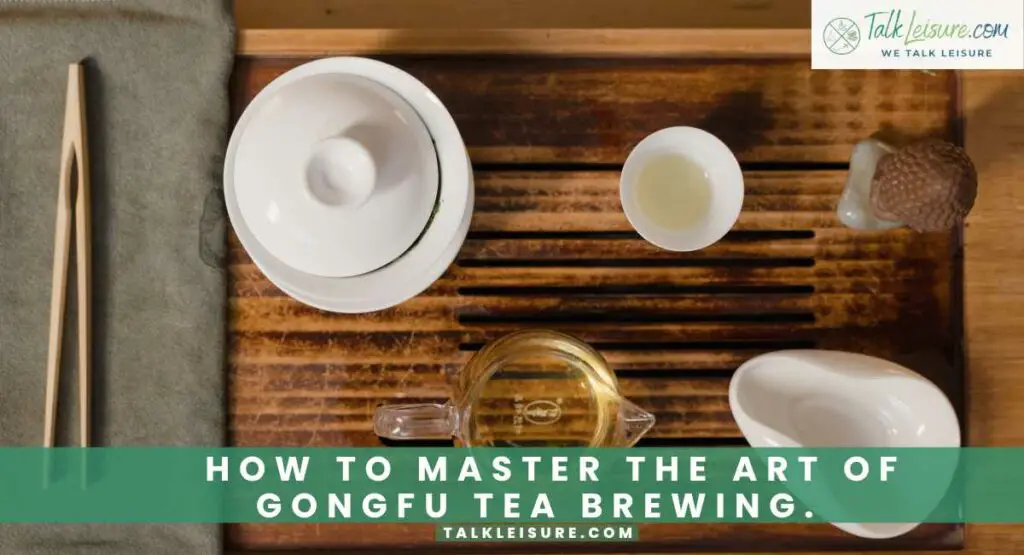
The Artistic Tapestry of Gongfu Tea:
Picture this – a centuries-old tradition that weaves together the artistry of tea-making with a touch of mindfulness. Gongfu tea, originating from the heart of China, is not just a beverage; it’s a cultural experience, a ceremony that elevates the act of brewing to an art form.
Unlocking the Secrets
Gongfu, which translates to “skill achieved through hard work,” embodies the dedication and precision required to master this traditional brewing method. It’s not about a quick cuppa; it’s about a meticulous, deliberate process that unfolds in stages, revealing the true essence of the tea leaves.
Why Gongfu?
Because Tea Deserves It: Gongfu tea is no ordinary brew. It’s a celebration of tea leaves carefully nurtured, plucked, and prepared. The method allows us to extract layers of flavors, unraveling the story each leaf carries. It’s a symphony of taste notes, an exploration of the depth and complexity that good tea has to offer.
What Sets Gongfu Apart
Gongfu tea isn’t just about the final product; it’s about the journey. The unique tools, the rhythmic pouring, the aromatic dance – all contribute to an experience that transcends the ordinary.
Imagine a tea session that engages all your senses, inviting you to savor not just the tea but the very moment it is created.
So, buckle up, fellow tea enthusiasts, as we dive into the world of Gongfu tea, where tradition meets technique, and every brew tells a story.
In the upcoming sections, we’ll unpack the essential tools, unravel the secrets of water and temperature, and guide you through the dance steps of Gongfu brewing. Get ready to sip your way through a sensory adventure like no other!
Also read: A deep dive into the flavors, aromas, and textures of white, green, black, and oolong teas.
Understanding Gongfu Tea
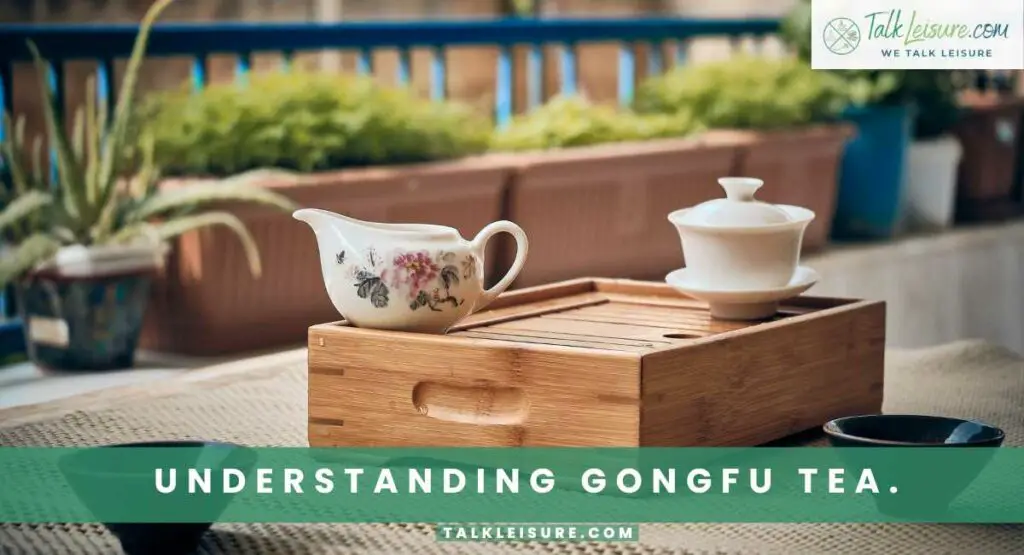
In our quest to master the art of Gongfu tea brewing, it’s imperative to delve into the rich tapestry of its origins, grasp the fundamental principles guiding its meticulous brewing process, and uncover the unique essence that sets Gongfu tea apart from the ordinary.
Origins and History of Gongfu Tea
Gongfu tea isn’t just a brewing method; it’s a journey through time. Originating in the Fujian province of China during the Ming dynasty, the history of Gongfu tea is intertwined with tales of skilled artisans and a deep-rooted respect for the leaf. We’ll embark on a historical expedition, tracing the footsteps of this tradition from its humble beginnings to the revered practice it is today.
Key Principles of Gongfu Tea Brewing
At the heart of Gongfu tea lies a set of principles that transforms a simple cup of tea into a multisensory experience. From the precise measurement of tea leaves to the rhythmic pouring techniques, these principles are the guiding stars for those seeking mastery. Join us as we demystify these principles, breaking down the art of Gongfu brewing into a series of thoughtful and deliberate steps.
Why Gongfu Tea is Unique
What sets Gongfu tea apart from other brewing methods? The answer lies in the details. Gongfu tea is a celebration of the individual characteristics of each tea leaf, a recognition of the subtleties that unfold with each infusion. We’ll explore the unique attributes that make Gongfu tea a cherished practice among tea connoisseurs, from its ability to bring out nuanced flavors to the sense of mindfulness it instills in every sip.
As we navigate through the history and principles of Gongfu tea, you’ll gain a deeper appreciation for the artistry and intentionality behind each brewing session.
The journey to mastery continues as we move forward, unraveling more layers of this captivating practice. Stay with us, and let’s uncover the secrets that make Gongfu tea an art form worth mastering.
Essential Gongfu Tea Tools
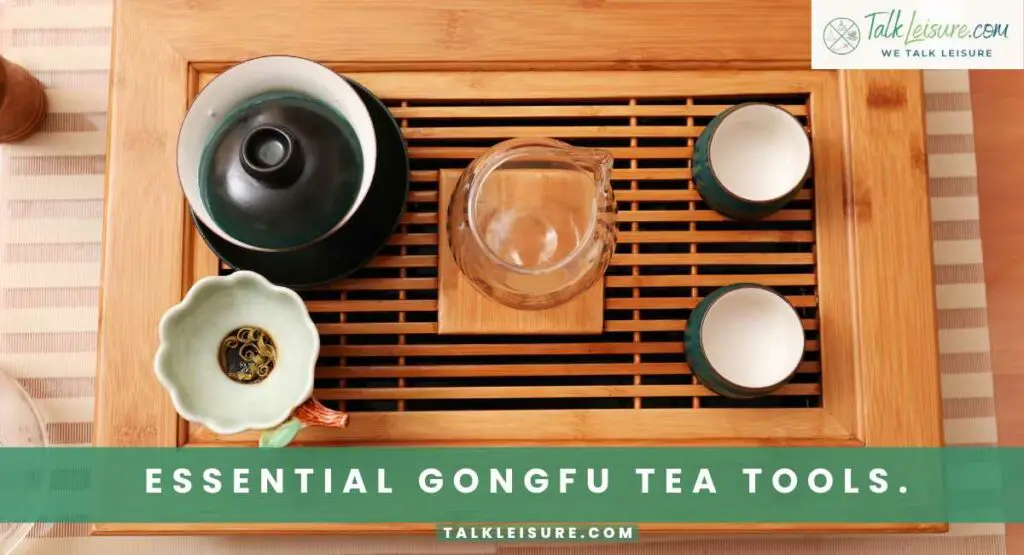
Welcome to the cornerstone of Gongfu tea mastery – the tools that weave magic into every pour. Let’s delve into the heart of Gongfu with essential instruments that transform a tea session into a symphony of flavors.
Choosing the Perfect Yixing Teapot
The Yixing teapot, a vessel with a soul, requires a discerning eye. Dive into the world of clay varieties – from robust purples to porous zisha. Size, shape, and craftsmanship are your compass. Find your perfect Yixing, an artistic companion for your chosen tea.
Gongfu Tea Tray: Beyond Functionality
The Gongfu tea tray is a canvas for the brewing ballet. Explore its role in managing spills and enhancing aesthetics. Bamboo, wood, porcelain – understand the types and choose a tray that harmonizes with your brewing style.
Tea Utensils: Gaiwan, Tea Pet, Fairness Cup, and More
Tea utensils, the silent architects of ritual. Unpack the versatile Gaiwan, the whimsical tea pet, and the fair-minded fairness cup. Each utensil has a unique role, adding to the ceremony’s beauty. Curate an ensemble that resonates with your personal tea symphony.
In this exploration of Gongfu tools, remember: each is a note, each a brushstroke, crafting a unique masterpiece in every teacup.
Join us in the next section, where we’ll journey through the types of teas that find their spotlight in the Gongfu theater, guiding you to discover the richness of tea varieties.
Selecting the Right Tea
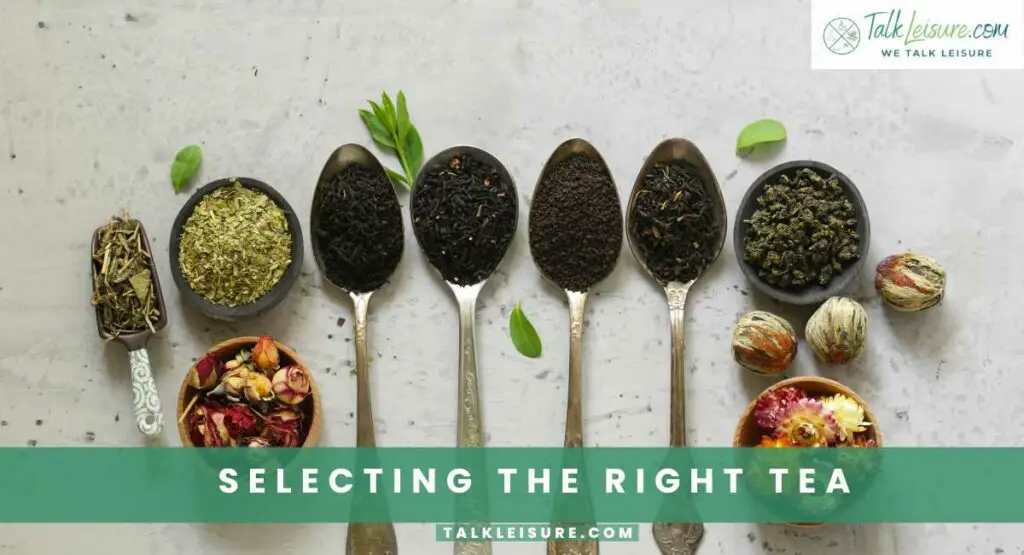
Selecting the Right Tea for Gongfu Brewing
In the realm of Gongfu tea, the tea selection is pivotal, dictating the nuances and depth of your brewing experience. Let’s dive straight into the essentials:
Types of Tea Suitable for Gongfu Brewing: Gongfu brewing is a versatile stage that welcomes a variety of teas. Oolong’s floral elegance, the robust notes of pu-erh, the delicate dance of green tea – each type contributes its unique character. Consider the tea’s inherent qualities to curate a Gongfu performance tailored to the nuances of your chosen leaves.
Importance of Tea Quality: Quality isn’t a mere talking point in Gongfu tea; it’s the heartbeat. Your tea’s journey from leaf to cup shapes the symphony of flavors. Appreciate the craftsmanship, terroir, and cultivation techniques. Quality is the foundation, ensuring that each infusion becomes a celebration of the tea leaf’s narrative.
How to Source High-Quality Tea: Sourcing exceptional tea is an art. Scrutinize labels, explore local tea shops, and venture into the online tea community. Seek reputable sources that share the stories behind the leaves. Your journey to Gongfu mastery begins with selecting teas that embody excellence, making each brewing session an exploration of the finest craftsmanship.
As you curate your tea selection, imagine yourself as a director casting the perfect actors for a play. The right tea, like a seasoned performer, enhances the brewing ritual, turning each infusion into a captivating act. Join us in the upcoming sections, where we’ll unravel the intricacies of water, temperature, and brewing techniques, refining your path to Gongfu expertise.
Water Quality and Temperature
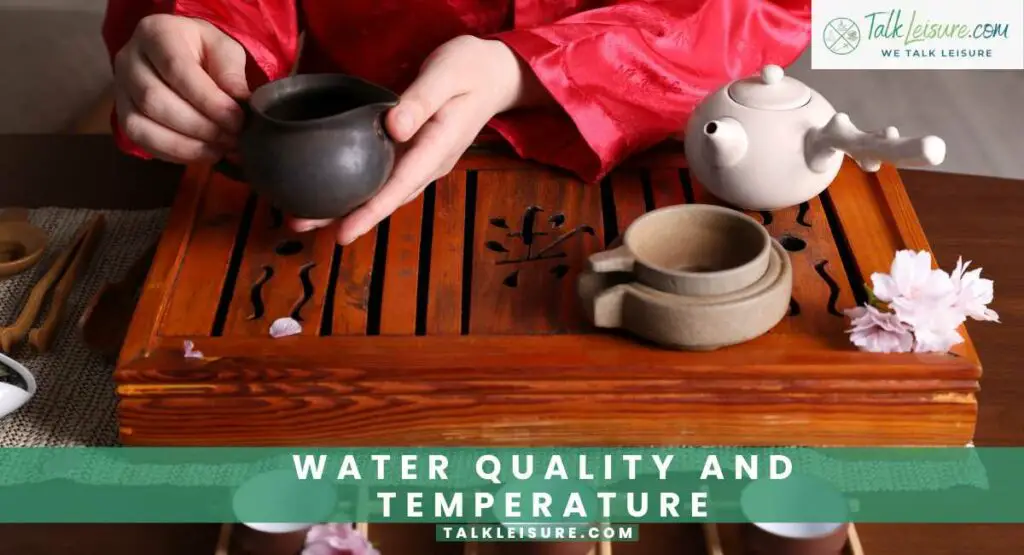
In the delicate dance of Gongfu tea brewing, the unsung heroes are often the simplest: water. Yet, the quality of water and its temperature hold the power to transform a mundane steeping into a mesmerizing performance. Join us as we dive into the pivotal role of water in the Gongfu ritual, exploring the significance of quality, the nuances of temperature, and the delicate balance of water-to-tea ratio.
Importance of Water Quality
Water, the lifeblood of Gongfu tea, serves as the medium through which the leaves express their symphony of flavors. Understanding the importance of water quality is paramount. We’ll unravel the impact of factors such as mineral content, purity, and freshness on the final brew. Just as a conductor guides an orchestra, quality water conducts the harmonious notes of Gongfu tea to perfection.
Optimal Water Temperature for Different Teas
Tea leaves have their preferences, and catering to them is the key to unlocking their full potential. In this section, we’ll explore the nuanced world of water temperature, dissecting the ideal degrees for delicate green teas, robust black teas, and everything in between. The temperature at which water caresses the leaves determines whether your brew will be a lively waltz or a serene adagio.
Water-to-Tea Ratio
Balance is the essence of Gongfu tea, and the water-to-tea ratio is the tightrope that brewers walk. Too much water, and the flavors may drown; too little, and the nuances might not fully unfold.
We’ll guide you through the delicate art of finding the perfect ratio, ensuring that each infusion is a showcase of the tea’s complexity without overwhelming the delicate dance between leaves and water.
As you embark on your Gongfu tea journey, remember that water is not merely a vessel; it is an active participant in the creation of your tea symphony.
In the following sections, we’ll explore the intricacies of Gongfu brewing technique, allowing you to refine your skills and conduct the perfect tea orchestra. Stay tuned for a deeper dive into the art of pouring, steeping, and savoring.
Gongfu Brewing Technique: Mastering the Art
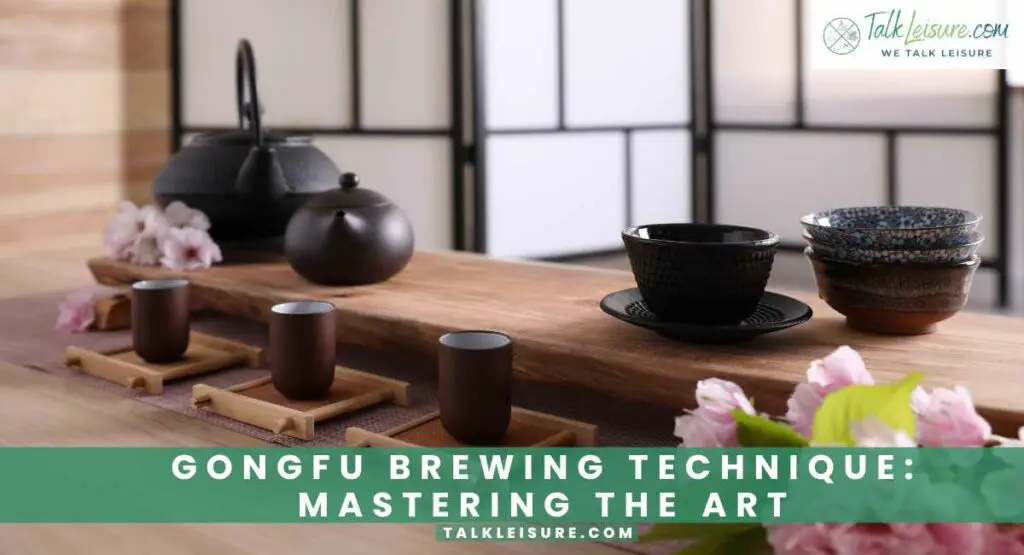
In the intricate world of Gongfu tea, brewing is not just a method—it’s a finely tuned performance. Let’s break down the steps to immerse yourself in the art of Gongfu brewing.
Step-by-Step Guide to Gongfu Brewing
- Prepare Your Teaware: Begin by warming your teapot, Gaiwan, or Yixing vessel. This ensures an even brewing temperature.
- Measure Tea Leaves: Accurately measure your tea leaves, usually 5-7 grams, depending on the size of your teaware. Place the leaves in your teapot or Gaiwan.
- Rinse the Tea Leaves: Pour hot water over the tea leaves and immediately discard this first infusion. This quick rinse helps awaken the leaves and remove any impurities.
- First Infusion—Awakening the Leaves: Pour hot water over the tea leaves again, allowing them to unfurl and release their initial flavors. This first infusion is brief, lasting only about 5-10 seconds.
- Subsequent Infusions—Building Complexity: Gradually increase the steeping time with each infusion, typically adding 5-10 seconds. Gongfu brewing allows for multiple infusions, unveiling different layers of flavor in each.
Pouring and Steeping Techniques
- Controlled Pouring: Pouring is an art in Gongfu brewing. Whether using a Gaiwan or teapot, control the flow to avoid spills and ensure an even distribution of tea among the cups.
- Heightened Steeping Techniques: Experiment with pouring from varying heights. A higher pour introduces oxygen, enhancing the tea’s aroma. A lower pour minimizes aeration, intensifying the concentration of flavors.
Adjusting Brewing Parameters for Different Teas:
- Green Teas: Use slightly cooler water (around 175°F or 80°C) and shorter steeping times to preserve the delicate flavors.
- Oolong Teas: Opt for water temperatures around 185-205°F (85-96°C) with slightly longer steeping times. Oolongs often shine through multiple infusions.
- Black Teas: Higher water temperatures (200-212°F or 93-100°C) and longer steeping times bring out the robust flavors characteristic of black teas.
- Pu-erh Teas: Embrace boiling water and extended steeping times for the complex and earthy flavors of pu-erh. Multiple infusions are key to unlocking its depth.
Below is a table outlining the general guidelines for Gongfu brewing across different types of tea:
| Type of Tea | Water Temperature | Amount of Tea Leaves | 1st Infusion Time | 2nd Infusion Time | Number of Infusions |
|---|---|---|---|---|---|
| Green Tea | 175°F (80°C) | 5-7 grams | 10 seconds | 15 seconds | 3-4 |
| Oolong Tea | 185-205°F (85-96°C) | 5-7 grams | 15 seconds | 20 seconds | 6-8 |
| Black Tea | 200-212°F (93-100°C) | 5-7 grams | 20 seconds | 25 seconds | 4-6 |
| Pu-erh Tea | Boiling water | 5-7 grams | 10 seconds | 20 seconds | 10+ |
These are general guidelines, and personal preferences may lead to variations in brewing times and temperatures. Gongfu brewing is an art, so feel free to adjust parameters based on your taste preferences and the specific characteristics of the tea you are brewing.
Gongfu brewing is a dance between precision and intuition. Experiment with these steps, adapting them to your preferences and the specific characteristics of the tea you’re brewing. As you refine your technique, you’ll uncover the true mastery and delight within the Gongfu tea ritual.
Advanced Gongfu Techniques: Elevating Your Tea Mastery
Multiple Infusions and Their Benefits
The beauty of Gongfu brewing lies in its ability to unlock a tea’s full potential through multiple infusions. After that initial steep, resist the urge to discard those leaves. Instead, continue the dance of brewing, gradually increasing infusion times.
Each subsequent pour unveils new layers of flavor, revealing the true depth and complexity of the tea.
Embrace the art of patience, and you’ll be rewarded with a symphony of tastes that evolves with each infusion.
Aging and Storing Tea:
Tea, like a fine wine, matures and transforms over time. Aging tea is a nuanced practice that requires attention to storage conditions. Consider the type of tea – pu-erh, in particular, benefits from extended aging. Store your teas in a cool, dark place, away from strong odors. As the years pass, the leaves undergo a metamorphosis, offering a richer, mellower brew. Delve into the world of aged teas, and you’ll discover an entirely new dimension of flavors.
Blending Teas for Unique Flavors:
Become a tea alchemist by experimenting with blends. Blending allows you to tailor your tea experience, creating unique flavor profiles that cater to your preferences.
Mix different types of tea, play with ratios, and introduce complementary or contrasting notes. Whether you’re seeking harmony or a bold fusion, blending opens up a world of possibilities. It’s a chance to craft your own signature teas, adding a personal touch to your Gongfu sessions and surprising your palate with every sip.
Incorporate these advanced Gongfu techniques into your tea ritual, and you’ll elevate your brewing sessions to an art form. From the symphony of multiple infusions to the aging process that adds depth, and the creativity of blending, these techniques invite you to explore the limitless potential within your teapot.
As you master these advanced practices, you’ll find that Gongfu brewing becomes not just a method but a transformative journey of tea appreciation.
Creating a Gongfu Tea Ritual
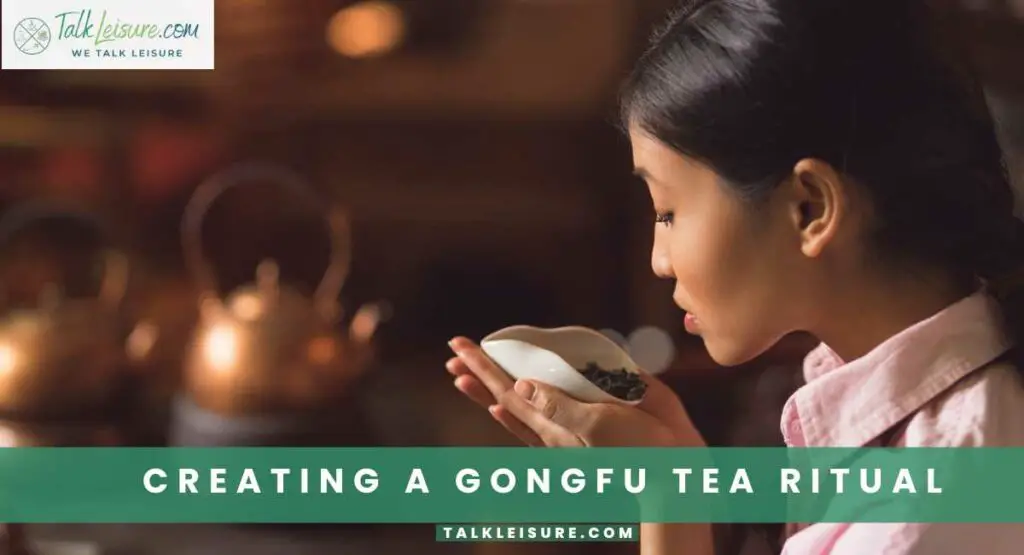
Welcome to the final act of our Gongfu tea journey – a section dedicated to transcending the mere act of brewing and sipping tea into a mindful practice, a ritual that enriches your daily life.
In this section, we’ll explore how to infuse intentionality into every tea session, making Gongfu tea more than just a beverage but a profound experience.
Making Gongfu Tea a Mindful Practice
Gongfu tea isn’t just about the tea; it’s about the present moment. In this segment, we’ll delve into the principles of mindfulness and how they intertwine with the art of Gongfu brewing.
From the intentional selection of tea leaves to the rhythmic pouring and savoring of each infusion, discover how to cultivate mindfulness in every step of the process. Gongfu tea becomes a meditation, a practice that invites you to be fully present, embracing the richness of each moment.
Incorporating Gongfu Brewing into Daily Life
Gongfu tea need not be reserved for special occasions; it can be a daily ritual that enriches your life. Learn how to seamlessly integrate Gongfu brewing into your daily routine, whether it’s a quiet morning reflection or an evening wind-down.
We’ll explore practical tips for creating a dedicated tea space, selecting teas that suit different moods, and making Gongfu tea an accessible and enjoyable part of your everyday life.
As you embark on the journey of creating a Gongfu tea ritual, remember that the essence of this practice goes beyond the teapot and the leaves. It’s about cultivating a mindful relationship with yourself, with the tea, and with the moments you choose to dedicate to this art.
In the concluding section, we’ll recap the key insights from our exploration, providing you with a roadmap to continue your Gongfu tea journey. Get ready to infuse your life with the spirit of Gongfu, turning each tea session into a celebration of mindfulness and connection.
Conclusion: Unlocking the Art of Gongfu Tea
In this journey through the enchanting world of Gongfu tea brewing, we’ve uncovered the historical tapestry, the meticulous techniques, and the artful nuances that make Gongfu tea a timeless tradition. Recap: Embrace the dance of Gongfu with quality tools, select teas thoughtfully, master water’s role, and refine your brewing technique.
Encouragement: Step into the rhythm of Gongfu, experiment with blends, and make it a daily ritual. Explore the depths of mindfulness in each pour. May your Gongfu journey be a symphony of flavors, a mindful practice, and a celebration of the artistry in every tea leaf. Sip, savor, and let the journey continue.
Frequently Asked Questions
- What tea is best for Gongfu?
Oolong tea shines brightest in Gongfu brewing, its intricate flavors unfolding through multiple infusions. Its semi-oxidized nature allows for a dance of complexities. Pu-erh, with its earthy richness, also thrives. Yet, Gongfu’s versatility welcomes green, black, and white teas. The best tea for Gongfu is one that captivates your palate, inviting a sensory journey in every steep.
- How can I enhance my tea flavor?
To elevate your tea’s flavor, start with high-quality leaves. Experiment with water temperature, adjusting for the tea type. Optimal steeping times vary—short for green, longer for black. Embrace Gongfu brewing for multiple infusions. Explore tea blending, pairing complementary flavors. Lastly, consider the vessel; teaware can influence taste. Tailor these elements to your preferences for a truly enhanced tea experience.
- Why does my tea have no taste?
A tasteless tea may result from factors like low-quality leaves or overbrewing. Ensure proper leaf-to-water ratio; too few leaves can lead to blandness. Check water quality—impurities affect taste. Experiment with brewing times and temperatures, avoiding extremes. Assess teaware; residue or improper cleaning can taint the flavor. Fine-tune these elements to rediscover the rich taste in your tea.

